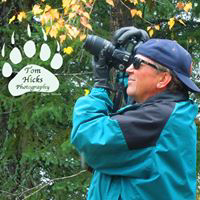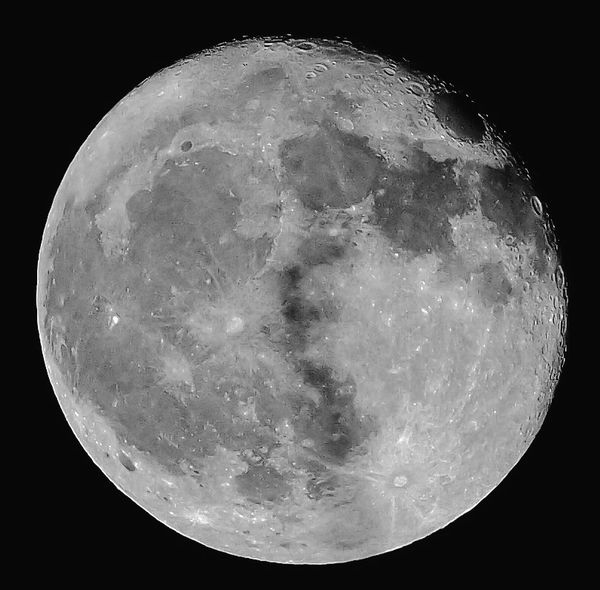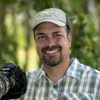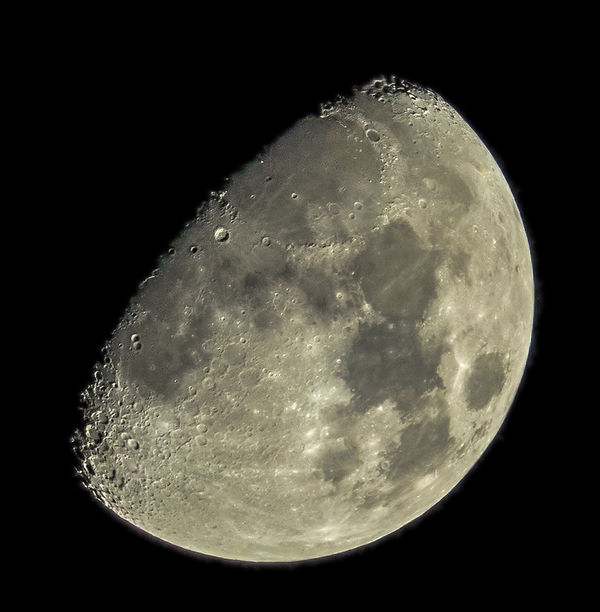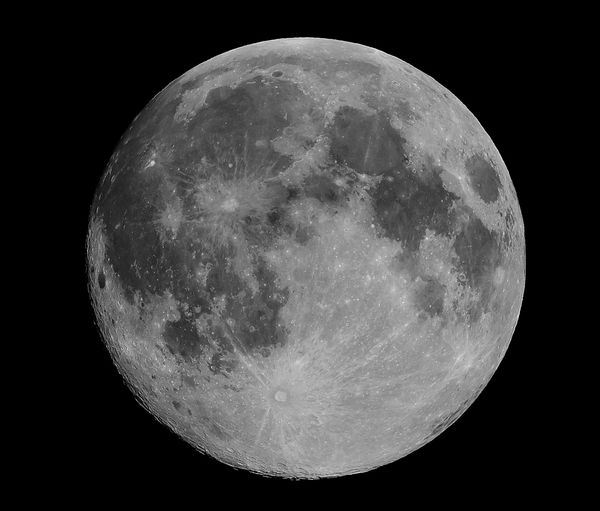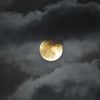Check out AI Artistry and Creation section of our forum.
Getting Successful Shots of the Moon
Oct 26, 2018 12:26:28 #
Mac wrote:
If the reflected light is the only light doesn't that make the object that reflects the light the light source?
If a tree falls in the forest, and no one is there to hear it...

Oct 26, 2018 13:02:38 #
tommystrat wrote:
If a tree falls in the forest, and no one is there to hear it...


...is the husband still wrong?


If you do not understand this, there are those who say that the REAL great question of philosophy is: "If a man speaks in the forest and there is no woman there to hear him, is he still wrong?" The answer is, obviously, "Yes." This leads to the other great question: "Why do women think being wrong is a bad thing when 90% of the fun we men have involves doing something wrong?"
Oct 26, 2018 13:12:13 #
Your shot needed a little post editing to bring out what your talking about .., it is a good Shot overall... one of the better ones posted in the last few weeks ..
Hope you did not mind , I wanted people to see that your shot was as good as it is ...
Hope you did not mind , I wanted people to see that your shot was as good as it is ...
Check out Travel Photography - Tips and More section of our forum.
Oct 26, 2018 13:19:13 #
Dr.Nikon wrote:
Your shot needed a little post editing to bring out what your talking about .., it is a good Shot overall... one of the better ones posted in the last few weeks ..
Hope you did not mind , I wanted people to see that your shot was as good as it is ...
Hope you did not mind , I wanted people to see that your shot was as good as it is ...
I don't mind at all..but for me it is not an improvement...looks over processed. But hey, to each his own.
Oct 26, 2018 13:26:55 #
Linda From Maine, that is a stunning photo. Just one comment to the OP. It is virtually impossible to get a perfectly focused lunar photo unless you are in the International Space Station because of atmospheric disturbances and conditions. Try some creative things such as Linda's photo, or clouds, foliage, mountains in the moon photo.
Oct 26, 2018 14:04:48 #
Les Brown wrote:
Linda From Maine, that is a stunning photo. Just one comment to the OP. It is virtually impossible to get a perfectly focused lunar photo unless you are in the International Space Station because of atmospheric disturbances and conditions. Try some creative things such as Linda's photo, or clouds, foliage, mountains in the moon photo.

Oct 26, 2018 14:27:20 #
Les Brown wrote:
Thank you and armymsg very much!Linda From Maine, that is a stunning photo...
As the OP has seen, everyone has their favorite combination of settings, based on their own successes. One I don't understand in this thread is the recommendation to set aperture at f/16. Because of the distance, a much smaller aperture works fine and that enables you to keep the ISO lower. Steve Perry's example was at f/5.6, and mine is f/6.7. Many folks here said f/11, and I'm curious if they have tried f/8?
I found larrypage's comments on page 2 very interesting - that we "see" the moon brighter than it really is because of the dark night. Personally, I enjoy how the moon appears to be much larger when it's closer to the horizon

The most important thing, and we see this on UHH every full moon cycle, is the tendency to over-expose. I didn't know what I was doing wrong with my own white blobs 'til I read a thread on UHH five years ago.
The rest is understanding that atmospheric conditions can play a large part in sharpness, and that less than full moons will show the craters better.
Oh - and that there is no end to the fun you can have doing composites:

Check out Printers and Color Printing Forum section of our forum.
Oct 26, 2018 14:46:55 #
Stroday, Great photo, and another reason why we love our A011 lens. Have usually done night work on the D700 now will swap it onto our 7200 if/when the rain that blew in overnight clears. sv
Oct 26, 2018 15:09:26 #
Linda From Maine wrote:
Thank you and armymsg very much! br br As the OP ... (show quote)
I agree 100% - you don't really need any DOF with just the moon in the shot - it can be done at F/1.4 if necessary. Just pick the sharpest F/stop (usually F/5.6 or 8) and keep the ISO down :)
Oct 26, 2018 15:29:20 #
Marlz wrote:
Beautiful full Hunter's Moon last night, and I ble... (show quote)
First off, shooting a full Moon and getting good contrast takes some good processing skills. When the Sun is shining straight down on the Moon there are very few shadows to enhance the surface features.
A couple of comments:
1) If you have any front mounted filters, remove them! They are an excellent source of reflections.
2) The Moon is a very bright object. Set ISO to 100 and exposure to about 1/250-1/400 sec. to start.
3) Autofocus on the Moon and lock the focus. Check the focus by zooming in.
4) Vary the exposure around these settings and keep shooting until you're happy with the result.
5) The Moon is an astro-imaging target and the Earth's atmosphere impacts its image quality, i.e.: the atmosphere is the last lens in your configuration and can cause the Moon's focus to change and its surface features to 'wobble'. Most serious Moon imagers either shoot a large number of subs (100+) or shoot video then use software to select the best few subs/frames for alignment and stacking to get the best possible result.
A 200 mm lens is short for good Moon photography but a good way to get started. A 500-600 mm lens is a better starting point for great Moon shots. The first attachment was shot with a RX10 IV @ 600 mm (equiv.). A 1000-2000 mm telescope is where you really start to see great Moon features (second attachment)!!
Enjoy!
bwa
Oct 26, 2018 15:50:14 #
If you have a second "reflected" moon, a lot of times that's from having a filter in front of the lens (or shooting through a window, which is essentially the same thing.)
Oct 26, 2018 16:16:18 #
Oct 26, 2018 16:19:33 #
Oct 26, 2018 18:23:28 #
More erroneous information from an expert on UHH. You are so very mistaken.
Steve Perry wrote:
Easiest way is to go into manual mode, spot meter off the moon, and open up 1 stop beyond what the meter says. The moon is about 1 stop brighter than middle-tone and that should get you a perfect exposure. Just did it two nights ago for my exposure book :)
Oct 26, 2018 18:45:26 #
papa wrote:
More erroneous information from an expert on UHH. You are so very mistaken.
Literally did just what I said for the moon shot on the page following the one where I made that statement (see image below). If you spot meter off of something that's brighter than middle-tone, the meter will attempt to underexpose it, trying to make it middle gray. So, when spot metering the moon, you need to open up or you'll underexpose. Your inability to grasp this simple concept does not make my statement incorrect.
If you want to reply, then register here. Registration is free and your account is created instantly, so you can post right away.
Check out Black and White Photography section of our forum.
